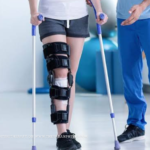When dealing with pain, injury, or mobility issues, choosing the right healthcare provider can feel overwhelming. Physical therapy, massage therapy, and chiropractic care are three popular treatment options, but they serve different purposes and use distinct approaches. Physical therapy focuses on restoring function through exercise and movement, massage therapy emphasizes soft tissue manipulation for relaxation and pain relief, while chiropractic care centers on spinal alignment and joint manipulation.
Making the wrong choice isn’t just ineffective—it can delay your recovery and potentially worsen certain conditions.
What Is Physical Therapy?

The Science-Based Approach to Movement and Function
Physical therapy is a healthcare profession that diagnoses and treats movement disorders, pain conditions, and functional limitations through evidence-based interventions. Physical therapists hold doctoral degrees and are licensed healthcare professionals who specialize in the musculoskeletal, neurological, and cardiopulmonary systems.
Physical therapists use a combination of manual therapy, therapeutic exercise, patient education, and modalities like ultrasound or electrical stimulation. The goal extends beyond pain relief to include restoring optimal movement patterns, building strength and endurance, and educating patients about injury prevention.
Conditions Best Suited for Physical Therapy
Physical therapy excels in treating complex conditions that require comprehensive rehabilitation and long-term functional improvement. The evidence strongly supports physical therapy for conditions like low back pain, where studies show it’s as effective as surgery for many cases but with fewer risks and lower costs.
Primary Conditions:
- Post-surgical rehabilitation (knee, shoulder, hip replacement)
- Sports injuries requiring return to activity
- Chronic pain conditions (arthritis, fibromyalgia)
- Neurological conditions (stroke, Parkinson’s disease)
- Balance and fall prevention in elderly patients
- Work-related injuries and ergonomic issues
- Pre and post-pregnancy musculoskeletal issues
What Is Massage Therapy?

The Art and Science of Soft Tissue Manipulation
Massage therapy involves the manual manipulation of soft tissues—muscles, tendons, ligaments, and fascia—to promote healing, relaxation, and pain relief. The therapeutic effects include increased blood circulation, reduced muscle tension, improved lymphatic drainage, and activation of the parasympathetic nervous system.
When Massage Therapy Is Most Effective
Massage therapy shines in situations where muscle tension, stress-related pain, or circulation issues are primary concerns. It’s particularly effective for healthy individuals seeking relaxation, athletes needing muscle recovery, or people with stress-related tension patterns. However, its effects are typically temporary, requiring regular sessions to maintain benefits.
Ideal Conditions:
- Muscle tension from stress or overuse
- Athletic recovery and performance enhancement
- Circulation problems and lymphatic congestion
- Relaxation and stress management
- Headaches related to muscle tension
- General wellness and preventive care
- Complement to other treatments for pain relief
What Is Chiropractic Care?

Spinal Health and Joint Manipulation Focus
Chiropractic care is a healthcare profession focused primarily on diagnosing and treating neuromuscular disorders, with particular emphasis on spinal conditions. Chiropractors hold doctoral degrees and are licensed to perform spinal adjustments, joint manipulations, and provide related treatments.
The core philosophy centers on the relationship between spinal alignment and overall health, believing that proper spinal alignment allows the nervous system to function optimally.
Chiropractic Care’s Areas of Expertise
Chiropractic care is most effective for specific types of back pain, neck pain, and headaches related to spinal dysfunction. Research supports its use for acute low back pain, certain types of neck pain, and some headache conditions.
Best Conditions:
- Acute low back pain and sciatica
- Neck pain and cervicogenic headaches
- Joint restrictions and mobility issues
- Some types of tension headaches
- Minor spinal misalignments
- Maintenance care for spinal health
- Complement to other treatments for musculoskeletal pain
Key Differences in Treatment Approaches
Treatment Philosophy and Goals
Physical therapy takes a comprehensive, function-focused approach that addresses the root cause of problems through movement analysis, strengthening, and patient education. The goal is long-term functional improvement and independence.
Massage therapy emphasizes immediate symptom relief and relaxation through soft tissue manipulation. While beneficial for stress reduction and muscle tension, it typically provides temporary relief and focuses on comfort rather than correcting underlying dysfunction.
Chiropractic care centers on joint alignment and spinal health, believing that proper alignment facilitates optimal nervous system function. Treatment focuses on joint manipulation to restore normal movement and reduce pain.
When to Choose Physical Therapy
Choose physical therapy when you need comprehensive rehabilitation that addresses underlying causes of dysfunction. It’s essential after surgery, serious injuries, or when dealing with chronic conditions that affect daily function.
Choose Physical Therapy When You Have:
- Recent surgery requiring rehabilitation
- Chronic pain affecting daily activities
- Balance problems or fall risk
- Sports injuries needing return to activity
- Work-related injuries or repetitive strain
- Conditions requiring exercise prescription
- Need for long-term self-management strategies
Physical therapy excels in treating complex cases involving multiple body systems or when medical conditions complicate recovery.
When to Choose Massage Therapy
Massage therapy is ideal when stress reduction, relaxation, and general wellness are primary goals. It works best for generally healthy individuals looking to enhance their well-being rather than treat specific medical conditions.
Choose Massage Therapy For:
- Stress-related muscle tension
- Athletic recovery and performance
- General relaxation and wellness
- Circulation improvement
- Complement to other treatments
- Preventive muscle maintenance
- Immediate pain relief needs
When to Choose Chiropractic Care
Chiropractic care is most appropriate for specific types of spinal pain, particularly acute episodes where joint restrictions are a primary factor.
Choose Chiropractic Care For:
- Acute low back pain episodes
- Neck pain with stiffness
- Certain types of headaches
- Joint mobility restrictions
- Minor spinal alignment issues
- Maintenance of spinal health
- Quick relief from mechanical pain
How These Treatments Can Work Together
Integrated Care for Optimal Results
The most effective treatment often involves combining approaches. Physical therapy can address underlying movement problems while massage provides symptom relief and stress management. Chiropractic care might help with acute pain episodes while physical therapy works on long-term solutions.
Effective Integration Strategies:
- Ensure providers communicate about your treatment plan
- Use physical therapy as the primary coordinator for complex cases
- Apply massage therapy for symptom management during PT
- Utilize chiropractic care for acute episodes within comprehensive plans
- Regular progress reviews with all providers
Making Your Decision
Start with the Right Assessment
For complex or unclear problems, starting with physical therapy often provides the most comprehensive evaluation. For simple muscle tension or stress-related issues, massage therapy might be appropriate as a first choice. For acute spinal pain episodes, chiropractic care could provide quick relief.
Trust Your Instincts and Results
Pay attention to how you respond to treatment. The right treatment should show measurable improvements in your symptoms and function within the first few weeks.
Take Action for Better Health
Your Next Steps:
- Assess your primary symptoms and goals
- Consider the acute versus chronic nature of your condition
- Check your insurance coverage and budget considerations
- Choose providers with appropriate credentials and experience
- Start treatment promptly to prevent problems from worsening
- Monitor progress and adjust your approach as needed
The key to successful treatment is taking action rather than suffering in silence. Whether you choose physical therapy for comprehensive rehabilitation, massage for stress relief and wellness, or chiropractic care for spinal health, getting appropriate treatment is the first step toward feeling better and functioning optimally.





